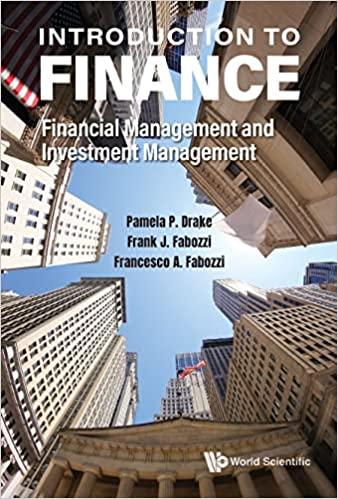Question
Consider a Dutch investor with 1,000 euros to place in a bank deposit in either the Netherlands or Great Britain. The (one-year) interest rate on
Consider a Dutch investor with 1,000 euros to place in a bank deposit in either the Netherlands or Great Britain. The (one-year) interest rate on bank deposits is 1% in Britain and 5% in the Netherlands. The (one-year) forward europound exchange rate is 1.65 euros per pound and the spot rate is 1.5 euros per pound. Answer the following questions, using the exact equations for uncovered interest parity (UIP) and covered interest parity (CIP) as necessary.
1) What is the euro-denominated return on Dutch deposits for this investor?
The euro-denominated return on Dutch deposits for this investor is 1,050.
The euro-denominated return on Dutch deposits for this investor is 1,005.
The euro-denominated return on Dutch deposits for this investor is 1,111.
The euro-denominated return on Dutch deposits for this investor is 1,011.
2) What is the (riskless) euro-denominated return on British deposits for this investor using forward cover?
The euro-denominated return on British deposits for this investor (using forward cover) is 1,111.
The euro-denominated return on British deposits for this investor (using forward cover) is 1,500.
The euro-denominated return on British deposits for this investor (using forward cover) is 1,575.
The euro-denominated return on British deposits for this investor (using forward cover) is 1,650.
3) Is there an arbitrage opportunity here? Explain why or why not. Is this an equilibrium in the forward exchange rate market?
No, there is no arbitrage opportunity. The euro-denominated return on British deposits is higher than that on Dutch deposits. This is not an equilibrium. However, the actions of traders seeking to exploit the arbitrage opportunity will cause the market to move toward equilibrium.
Yes, there is an arbitrage opportunity. The euro-denominated return on British deposits is higher than that on Dutch deposits. This is not an equilibrium. However, the actions of traders seeking to exploit the arbitrage opportunity will cause the market to move toward equilibrium.
No, there is no arbitrage opportunity. The euro-denominated return on British deposits is higher than that on Dutch deposits. This is an equilibrium.
Yes, there is an arbitrage opportunity. The euro-denominated return on British deposits is lower than that on Dutch deposits. This is not an equilibrium. However, the actions of traders seeking to exploit the arbitrage opportunity will cause the market to move toward equilibrium.
4) If the spot rate is 1.5 euros per pound, and interest rates are as stated previously, what is the equilibrium forward rate, according to CIP?
According to the covered interest parity (CIP), the equilibrium forward rate is 1.44 pounds per euro.
According to the covered interest parity (CIP), the equilibrium forward rate is 1.56 euros per pound.
According to the covered interest parity (CIP), the equilibrium forward rate is 1.5 pounds per euro.
According to the covered interest parity (CIP), the equilibrium forward rate is 1.65 pounds per euro.
5) Suppose the forward rate takes the value given by your answer to (d). Compute the forward premium on the British pound for the Dutch investor (where exchange rates are in euros per pound). Is it positive or negative? Why do investors require this premium/discount in equilibrium?
According to the uncovered interest parity (UIP), the equilibrium forward premium is 4%. It is a negative value. The existence of a negative forward premium would imply that investors expect the euro to appreciate relative to the British pound. Therefore, when establishing forward contracts, the forward rate is lower than the current spot rate.
According to the uncovered interest parity (UIP), the equilibrium forward premium is 0.04%. It is a positive value. The existence of a positive forward premium would imply that investors expect the euro to depreciate relative to the British pound. Therefore, when establishing forward contracts, the forward rate is higher than the current spot rate.
According to the uncovered interest parity (UIP), the equilibrium forward premium is 0%. The existence of a null forward premium would imply that investors expect neither the euro nor the pound to depreciate relative to each other, and the forward and spot exchange rates have the same value.
According to the uncovered interest parity (UIP), the equilibrium forward premium is 4%. It is a positive value. The existence of a positive forward premium would imply that investors expect the euro to depreciate relative to the British pound. Therefore, when establishing forward contracts, the forward rate is higher than the current spot rate.
Step by Step Solution
There are 3 Steps involved in it
Step: 1

Get Instant Access to Expert-Tailored Solutions
See step-by-step solutions with expert insights and AI powered tools for academic success
Step: 2

Step: 3

Ace Your Homework with AI
Get the answers you need in no time with our AI-driven, step-by-step assistance
Get Started


